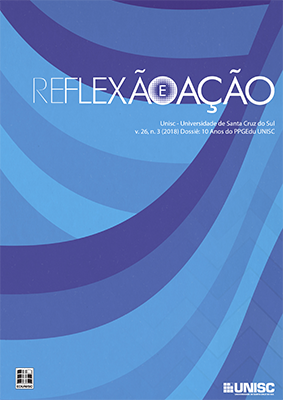THE EDUCATION OF ETHNIC-RACIAL RELATIONS IN SCHOOLS: AN ANALYSIS OF THE CONCEPTIONS OF GRADUATING STUDENTS OF ELEMENTARY SCHOOL
DOI:
https://doi.org/10.17058/rea.v26i3.11706Keywords:
Education of Ethnic-racial Relations, Elementary School, School Experiences.Abstract
The article deals with the conceptions of education of ethnic-racial relations/ERER present in the testimonies of students from the Elementary School, from their trajectories in two schools of the municipal network of São Leopoldo/RS. The objective is to understand how students conceive the education of ethnic-racial relations from their school experiences and reflect on the scope of the implementation of Law 10.639/03 locally. In a qualitative approach, the study is empirically based on the analysis of the municipal legislation for ERER, interviews with pedagogical supervisors and the application of a questionnaire to the students. As a result, we discuss limits and possibilities of effecting an education of ethnic-racial relations in the schools studied and identify the knowledge/reflections built by the students on the theme based on their school experiences.Downloads
Downloads
Published
Issue
Section
License
The submission of originals to this journal implies on the transference, by the author(s), of the printed and digital publishing rights. The author´s rights to the published articles are the author´s, the journal has the rights over the first publication. The author(s) can only use the same results in other publications, indicating clearly that this journal was the original publisher. Since we are an open access journal, the free use of articles is permitted for educational and scientific applications, as long as they inform the source according with the CC-BY license from Creative Commons.


